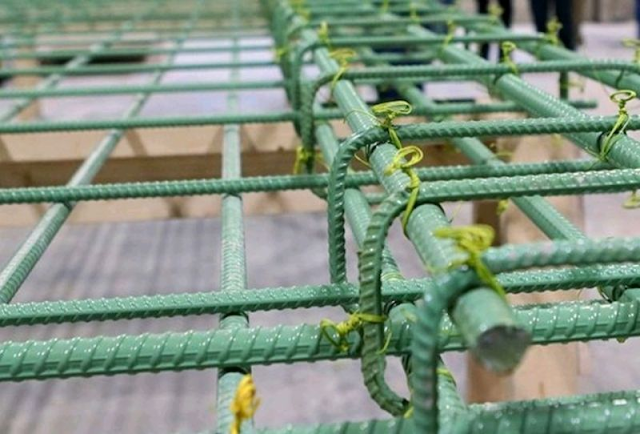Epoxy-coated Reinforcement
Epoxy-coated Reinforcement
Let's discuss the advantages and drawbacks of using epoxy-coated reinforcement in construction projects:Advantages:
1. Corrosion Resistance: Epoxy-coated reinforcement is exceptional at resisting corrosion, which can prolong the lifespan of a structure. This is particularly crucial in environments where moisture and chemicals are prevalent.
2. Improved Bonding: Epoxy-coated reinforcement provides better bonding with concrete, which can bolster the strength and durability of the structure. The rough surface of the epoxy coating promotes a robust bond between the reinforcement and the concrete.
3. Cost-effectiveness: Over time, using epoxy-coated reinforcement can be cost-effective since it can reduce the need for expensive maintenance and repairs. The epoxy coating shields the reinforcement from corrosion and other types of damage.
4. Easy Installation: Epoxy-coated reinforcement is straightforward to install and can be used in various applications. This can help reduce labor costs and overall project expenses.
5. Environmentally Friendly: Epoxy coatings are low in volatile organic compounds (VOCs) and can be applied with minimal environmental impact.
Disadvantages:
1. Durability: Epoxy coatings can be vulnerable to damage and degradation over time, notably in environments where the coating is exposed to UV rays or high temperatures. This can diminish the effectiveness of the coating and raise the risk of corrosion.
2. Quality Control: The application of epoxy coatings necessitates meticulous quality control to ensure that the coating adheres correctly to the reinforcement. Poor application can lead to delamination and other types of damage.
3. Cost: Epoxy-coated reinforcement can be more expensive than uncoated reinforcement, particularly in regions where the reinforcement is not exposed to corrosion.
References:
1. "Corrosion of Steel Reinforcement in Concrete Structures and Its Control." M. Raheem, F. A. Siddiqui. Journal of Materials in Civil Engineering, Volume 23, Issue 1, January 2011, pp. 91-107.
2. "Bond Strength of Epoxy-Coated Reinforcing Bars in Concrete." S. J. Kim, J. H. Lee. Journal of Materials in Civil Engineering, Volume 15, Issue 5, October 2003, pp. 482-488.
3. "Epoxy-Coated Reinforcing Steel for Bridges." National Cooperative Highway Research Program. Report 238, 1981.
4. "Epoxy Coated Reinforcing Steel: Construction and Inspection." Federal Highway Administration. Publication No. FHWA-SA-97-063, 1997.
5. "Environmental Benefits of High-Performance Coatings." The Sherwin-Williams Company. Accessed May 22, 2023.
6. "Durability of Epoxy-Coated Reinforcing Steel in Concrete." S. J. Kim, J. H. Lee. Journal of Materials in Civil Engineering, Volume 17, Issue 5, October 2005, pp. 576-583.
7. "Quality Control of Epoxy-Coated Reinforcing Steel." Portland Cement Association. RD120T, 1999.
8. "Epoxy-Coated Reinforcing Steel for Concrete Structures. ACI 503R-93, 1993




No comments
Post a Comment